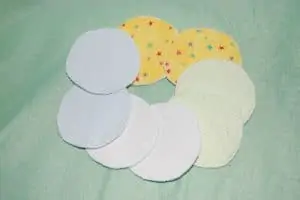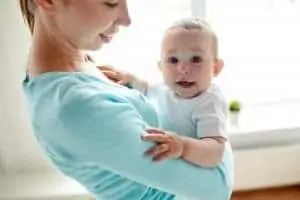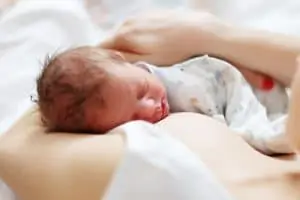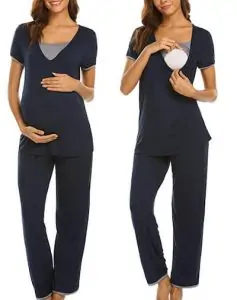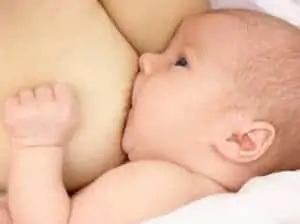Leaking milk isn’t on our list for the best things to experience. Lactating might be a normal part of motherhood, but no one wants large milk spots on their shirts as they walk through the store. That’s where nursing pads come into play and picking the right type matters a lot.
Aside from the embarrassment, breast milk can ruin your clothes and increase how much laundry you need to do that week. As a parent, you probably already have a lot of clothes to wash; you don’t want to add any more. You might not realize that breast milk can damage the materials in your clothing if it’s a delicate piece.
Thankfully, as your milk supply regulates over the first few weeks and months of your baby’s life, leaking decreases. You won’t leak the entire time that you breastfeed, so you don’t need to worry about wearing nursing pads forever.
Let’s take a look at the different types of nursing pads!
The Types of Nursing Pads
Breastfeeding pads come in different sizes, shapes, and types. You can find reusable and disposable. Some adhere to the inside of your bra, but others are shaped like cups, contouring to your breast.
Each type has pros and cons. You might find that you want to have several kinds of pads at home for different situations.
Disposable Nursing Pads
The most common choice is disposable pads, which are worn then discarded. You can find these pads in different thicknesses; some are meant for daylight use and some for nighttime. Several brands sell disposable pads, so I suggest that you give a few brands a try to see which you prefer.
Women love disposable pads for a few reasons, such as:
- They’re great for traveling or going to the store.
- You never have to worry about washing them.
- Most have adhesive on the backs, so they stick to your bra or shirt.
- Disposable is better if you have yeast problems on your nipples. Candida can be hard to remove out of fabric.
- There is a plastic lining on the outside of the pads that prevent leaks, even if the pad itself is full of milk.
There are two significant concerns with this type. First, they might not hold as much as other types unless you buy the nighttime option. Second, buying disposable anything over time can be expensive.
Moms will use either two or three boxes of disposable pads per month. If you’re on a budget but want to use disposable pads sometimes, pick to use them when you are away from the house for long periods. You don’t want to find yourself without any nursing pads and away from home.
Reusable Nursing Pads
Instead of buying more all the time, using reusable pads is a more cost-effective choice. You can wear a pair, toss them into the washing machine, and use them repeatedly. Let’s not forget this means that they’re more environmentally friendly than disposable pads.
You’ll need to have several pairs on hand unless you wash clothes each day. I had several on hand so that I didn’t need to rush and wash more if I ran out.
Several reasons that reusable breast pads might be the best choice for you include:
- They help you save money. You can use these same pads over and over again with multiple kids.
- Reusable can be great for sensitive skin since reusable pads tend to contain chemicals and plastic that could irritate you.
- If you are a heavy leaker, cloth pads might absorb more for you.
However, one of the significant downfalls of reusable pads is that they can show through your clothing easier unless you have contoured reusable breastfeeding pads. These are shaped to resemble your breast, and the edges of the fabric shouldn’t be as evident underneath your clothing.
Silicone Breastfeeding Pads
If you see these in the store, they’re not meant to absorb any leakage. Instead, the idea is that the pressure put on your nipples will stop the leaking and work to an extent. Pressing your hand against your breast when you feel the tingle that indicates your body is about to letdown works just as well!
These pads are made from soft silicone, and they adhere directly to your breast. That means you can wear them with or without a bra, which is nice. Some women prefer to wear these under delicate, nice clothing to prevent leaks entirely.
Hydrogel Pads
If you have sore or cracked nipples, hydrogel pads are a great option. These pads aren’t meant to stop or prevent leaking. Instead, you use them if you’re experiencing discomfort while breastfeeding. These pads are stored in either the freezer or the refrigerator; then, you put them in your bra for quick relief!
Homemade Pads
If you’re handy or crafty, you can make a few pairs of homemade breastfeeding pads. All you need is some cotton material sewed together in a circle, then place them over your breast. Some women get creative and cut up sanitary napkins to fit inside of their bras.
If you decide to make homemade pads, be sure that you avoid material that isn’t 100% cotton. It’s ideal for soaking up leaks, and it feels good against your skin. Plus, cotton is breathable; you don’t want to trap moisture next to your breast, which can lead to thrush.
For those on a budget, homemade breast pads can be the best solution. You save money and have a practical option.
What to Look for When Buying Breastfeeding Pads
Here are some things to consider:
- Adhesive Backing
Many disposable nursing pads come with a strip on the back that is sticky to help them stay inside your bra or shirt.
- Size of Breast or Pad
If you’re a larger-breasted woman, then you’ll want a pad that offers full coverage. Look for larger pads or ones that are marketed for women who need more coverage.
- Laundering
Make sure your reusable pads are machine washable and can be tossed in the dryer.
- Discreetness
Chances are you don’t want everyone to see your pad underneath of your clothing. Pick a color that doesn’t show through your shirts. This is particularly important when picking reusable pads. You might want a contoured shape that cups your breast to decrease visibility.
Final Thoughts
You don’t need to pick just one type of nursing pad. You can use a mixture of them to fit whatever is happening that two or your particular situation. All moms need to keep some on hand if they’re breastfeeding.
Hey, this is Linda. My biggest accomplishment in life is being a mother of four children. Their current ages range from almost ten years old down to 20 months old.
I’m passionate about writing parenting articles because I understand so well all of the problems and trials you face as a parent. From breastfeeding woes to budgeting problems and behavior problems, along with everything in between, chances are I’ve faced it over the last ten years. Read more about Linda here.




